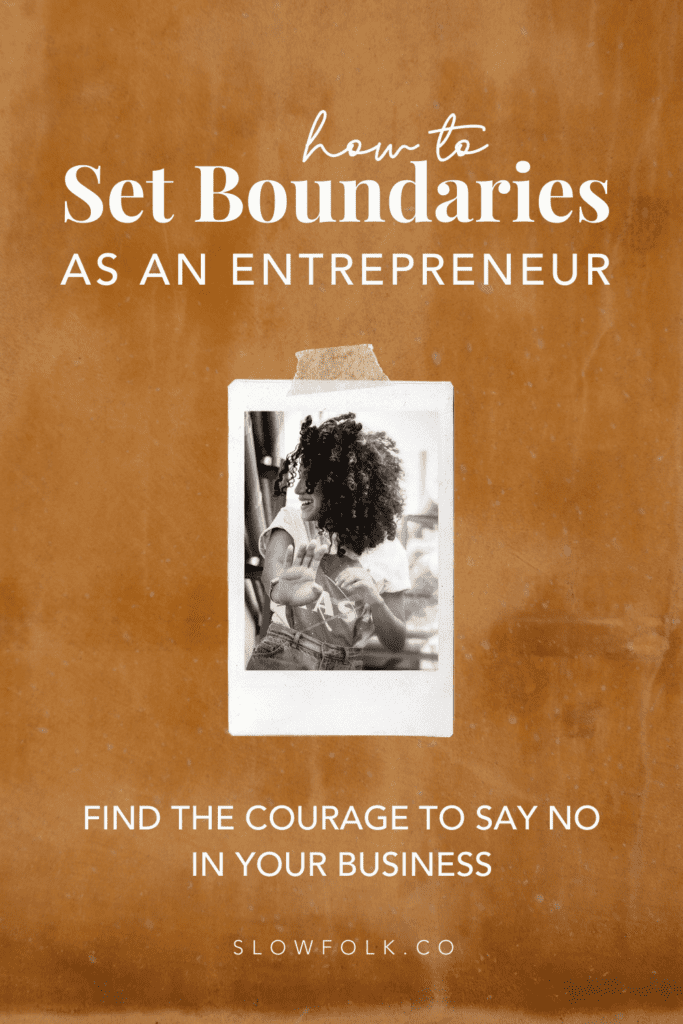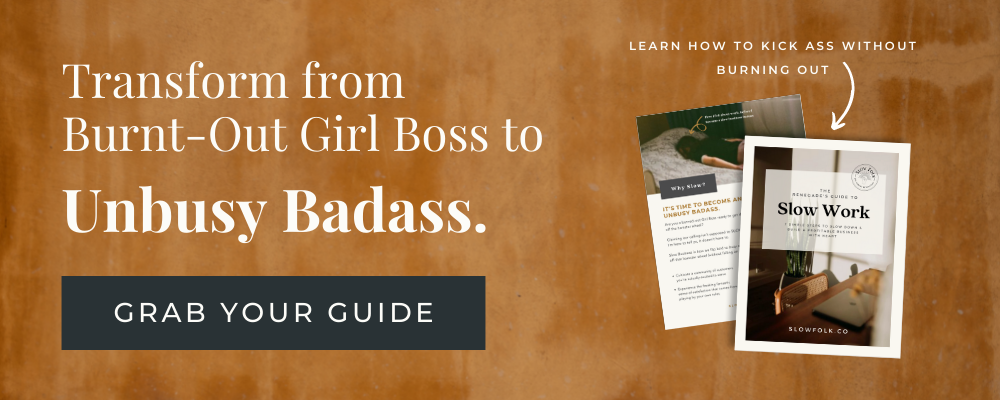Need to learn how to set boundaries in your business?
You quit your nine-to-five, dove in, chased down your dreams. You’re a goal getter, a lady boss, a #Mompreneur. You did it.
So why do you still feel like a failure?
Has the dream of becoming your own boss become a nightmare?
Are you spending valuable work time digging out from piles of laundry? Do you look up at the clock at 5 pm and realized you’ve been “working” on social media all day and didn’t *actually* get anything done?
Are you trying to decide if you should wash your daughter’s soccer uniform (for practice in t-minus two hours) or should you answer that client’s question – for the fourth time??
You are not alone.
Every female entrepreneur I know (including yours truly) struggles with the same sh*t.
I know what it is to madly try to peck out a client proposal on the keyboard with one free hand while nursing a fussy baby with the other. I know what it is to juggle sick kids, a marriage, soccer practice, meal planning not to mention that never-ending pile of laundry, all while tackling the daily challenges of entrepreneurship.
So if you’re feeling overwhelmed, I’m right here with you!

Living an intentionally Slow Life has given me the courage and skills to teach myself how to set boundaries
Setting clear boundaries is what’s allowed me to scale down my successful soap business and resist growing my bustling farm gate shop. Clear boundaries give me a framework to decide when to fire customers and the freedom to not live my life chained to my email. Can I get an AMEN to that?
Robust boundaries have allowed me to commit my life to that important work I dreamed about – you know – that spark that inspired you to become a Lady Boss in the first place.
Did you dream about answering endless (time-wasting) emails all day? I’m willing to bet that wasn’t your calling. It sure as heck wasn’t mine.
How to set boundaries (even if the idea of saying NO gives you hives)
It’s a constant work in progress, and I’m not gonna lie – even after many years of practice it is still as uncomfortable AF. Seriously. Some of this shit I hate with a passion. BUT I’ve learned from experience that it is nearly always worth the effort.
Yes, you will make mistakes. Yes, you might tick the odd person off. Yes, people will push back.
Setting boundaries will change your life and your relationships AND your business. It won’t be easy, but it will be worth it.
Stay strong. You’ve got this.

1) Be Proactive
If you want learn how to set boundaries as an entrepreneur – whether you’re a work-at-home-Mom, a solopreneur or just about anything else – start before there’s a problem.
Setting expectations at the outset of your relationships will save a lot of heartache early on.
Always look for opportunities where one NO can save you others down the road.
For example, Sundays are for my family. So, rather than answer a million individual emails about Sunday pickups, I have a blanket policy of no farm pickups on Sunday. Ever. I don’t make exceptions and I state it right at the outset.
Then I don’t even have to say NO. All I have to do is refer them to our FAQ page.
I also have no intention of answering every email that lands in my inbox the moment it arrives.
I say so right above my contact form on my website. I say it again in my email on-boarding for new clients. I even specifically ask that they not email me to ask if I got their email.
I’m funny and lighthearted about it, but by the end of their on-boarding, most clients know not to expect an instant response from me. They know it will take me at least a day or two to get back to them via email.
This doesn’t work for all the customers who come to my farm, and to those of you who are yelling at your screen right now that I’m driving customers away – you’re right. I am. On purpose.
If a customer doesn’t like my email policy, they probably won’t like other things about how I do business, either. That it totally OK.
I’d rather find out we’re not a good fit right at the beginning that later on when there’s some huge mess I have to clean up.
This is one of the core methods I use to niche my business. Want to learn more about niching and why it kicks ass? Check out my audio-coaching package Find Your Niche.
2) Know Your Highest Point of Contribution
If you don’t know what you OUGHT to be doing with your time, you’ll have an impossible time protecting that work.
Having clarity is key when learning how to set boundaries in your business.
This is a deep task, one worthy of its own post. You need to know what work will move the needle for you in your own unique circumstance.
If you are a writer, writing needs to be your focus. Not Twitter. Not Instagram. Not promotion or networking or anything else. Your goal in setting boundaries must be to protect as much time as possible to ACTUALLY WRITE.
You might also include non-work related priorities here – like time with your kids or for your weekly yoga class.
The better you protect your time so that you can focus on Deep Work, the more effective you will be during your work hours, and the more time you will have to dedicate to your family, or your crochet project or running your first marathon (k, maybe 5k ha)
Cal Newport has written a powerful book on this topic called, appropriately, Deep Work.
3) Be Clear
Being proactive only works if you are very clear.
If you mean NO, don’t, for heavens sake, say Maybe. If saying No makes you break out in hives, it’s tempting to say Maybe instead. (Not speaking from experience or anything here…)
If saying NO is a struggle for you, be sure to check out my post on How to Say No.
Start with something like “Because my time is very valuable to me I have a blanket policy of not … (fill in the blank)”
I nearly cried reading the FAQ page of Jen Hewett, a printmaker and surface designer whose work I admire. Now THIS is an example of clear, proactive boundary-setting. Jen’s time could easily be sucked up “helping” other would-be printmakers and designers, but she understands that if she did that, she wouldn’t have time to do HER work.
Sounds obvious, right? But you’d be surprised how easy it is to mistake time-sinks for deep work. Especially if the deep work is particularly challenging (isn’t it always) and responding to comments on Instagram or to random emails *feels* like being productive without, you know, having to actually do the hard work.
Seriously though. Be clear. Keep it simple and direct and you’ll save yourself a boatload of grief down the road.
4) Be Unapologetic
DO NOT EXPLAIN YOURSELF.
When we’re learning how to set boundaries at work, we have to get comfortable owning our decision to do so.
Don’t say sorry. Don’t give a laundry list of reasons WHY you’re saying NO.
Explaining and apologizing does two things :
1) You’re offering your NO as something that might be negotiable. If they can “fix” the reason you said NO, you’ll have to say “yes”, right?
2) Explaining or apologizing suggests you don’t really mean our NO. It’s disempowering. The moment we start explaining, we signal that we don’t actually own our decision.
That wishy-washy waffling opens us up to exchanges like this one :
So I recently had a customer send a pretty snarky one liner after I took “too long” responding to her email. All she wrote was “You don’t like answering emails, do you.”
It hit a nerve. And instead of ignoring it, knowing that my email policy was doing it’s good work of filtering out folks who weren’t a good fit – I took the bait. Sigh.
So I stewed on it and finally wrote her back a much too long email with an explanation, trying to communicate my email policy and breaking Rule Number 3.
I was not clear. I was emotional. I forgot the basics of how to set boundaries with my customers.
She wrote back with some pithy, not particularly kind “helpful” suggestions for my “dilemma” which, of course, just pissed me off more. But as I discovered (while yelling at my email in the grocery checkout line) – It’s not a dilemma, it’s a CHOICE.
If I had owned that, not apologized for it, I wouldn’t have found myself stung nearly to tears in the grocery store reading her email.
5) Be Resourceful
Technology can be a huge distraction, but it can also be a powerful tool for boundary setting.
I’m writing this right now while using a game-changing app in the fight against distraction, interruption and boundary-testers.
Freedom is a simple, inexpensive app that saves me from going down the rabbit hole otherwise known as the inter webs while I’m trying to write. If I didn’t use Freedom, a draft like this one might take me several sessions over several days.
I am nearly done this first draft in under an hour, thanks to Freedom.
Freedom blocks websites and apps – either carte blanche or selectively – so that I can create blocks for deep work free from interruptions.
6) Reflect on what works and what didn’t as you learn how to set boundaries
Setting boundaries isn’t one and done.
It must be a constant, evolving effort. Your boundary needs are not only unique to you as a person, but to your business and to your season of life.
I am a Mom to two young kids. After losing my Mom to cancer, I became even more protective of my time with my family.
I’m acutely aware of how short life is, and gal-dang it I’m not gonna let stupid nattering email get in the way of my being present for my kids.
It really is as simple as that.






